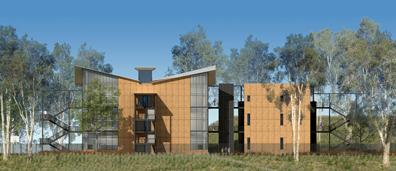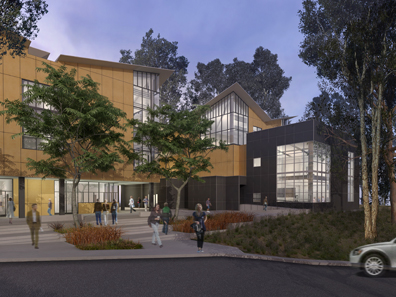Prototype Designed to Meet LAUSD Needs

LOS ANGELES — The Los Angeles Unified School district signed a contract with Gonzalez Goodale Architects through a competitive design process for new school building prototype to replace thousands of temporary classrooms.
Work will begin immediately on a new academic building built primarily of prefabricated materials. The 33,000-square-foot, two- to three-story prototype will be built in two phases and will be designed with flexibility to serve as a classroom, dance studio, science lab or library, depending on the needs of the school.
"The building addresses current LAUSD teaching strategies, but it also allows re-configuring to new pedagogies, including project-based teaching, team teaching, and providing real-world laboratories for studies like journalism, arts, or digital media," said David Goodale, Gonzalez Goodale’s design principal.
In the first phase of the contract, Gonzalez Goodale will organize a project team with structural, mechanical, electrical, landscape architecture and civil engineering consultants and seek approval for design and materials while the district assigns a specific site. The firm will complete the design once the site is chosen to take into account site-specific requirements.
The Pasadena-based firm’s design features a structure with modular dimensions and a canted roof that joins prefabricated components with a customized whole.
The prototype was designed to replace aging single-story portable classrooms that take up too much room on school grounds or as a school building for small learning communities to align with the district’s pedagogical goal, officials said.

The building’s flexibility is due to the design’s lack of internal load-bearing walls, according to architects at the firm. The prototype can first be used as a classroom, but eventually re-purposed to be anything from a science lab to a music studio to an administrative office.

The building’s flexibility is due to the design’s lack of internal load-bearing walls, according to architects at the firm. The prototype can first be used as a classroom, but eventually re-purposed to be anything from a science lab to a music studio to an administrative office.
Design officials also plan to deploy an prefabricated structural steel rigid-frame joint design that has been used in hospital construction and approved by the Office of Statewide Health Planning and Development. It must first be approved by the Division of State Architect before it is used in an academic setting.
The prototype also features prefabricated glass curtain walls to allow for daylighting and to create an airy, expansive interior environment. Concealed rooftop solar collectors used in the design are twice as efficient as conventioinal solar cells, helping increase the energy efficiency of the building, according to officials.
The prototype can allow for joint-use classrooms, collegial circulation areas, and generous frontage to anchor the community around the school grounds.
"Education isn’t confined to the classroom; it happens through making wider and wider connections, which is why the design allows for the community to be part of the process of learning," Goodale said. "A conducive learning environment is crucial to our nation’s future. A more energized investment in education continues to be the front line in preserving a meaningful and enlightened democracy."
